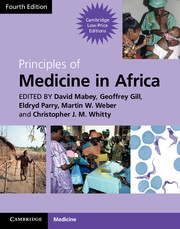Book contents
- Frontmatter
- Contents
- Contributors
- Foreword
- Section 1 Health and disease
- Section 2 Mother and child health
- Section 3 Infection: general principles
- Section 4 Major common infections
- Section 5 Bacterial infections
- Section 6 Viral Infections
- 34 Viral haemorrhagic fevers: yellow fever, Lassa fever, Rift Valley fever, Ebola/Marburg fever and Crimean–Congo fever
- 35 Dengue
- 36 Rabies
- 37 Influenza
- 38 Poliomyelitis
- 39 Varicella (chickenpox), herpes zoster and monkeypox
- 40 Rubella
- 41 Mumps
- Section 7 Protozoal infections
- Section 8 Helminth infections
- Section 9 Fungal infections
- Section 10 Non-communicable diseases
- Section 11 Diseases of body systems
- Section 12 Cancer and Palliative Care
- Section 13 Venoms and Poisons
- Index
- References
35 - Dengue
from Section 6 - Viral Infections
Published online by Cambridge University Press: 05 March 2013
- Frontmatter
- Contents
- Contributors
- Foreword
- Section 1 Health and disease
- Section 2 Mother and child health
- Section 3 Infection: general principles
- Section 4 Major common infections
- Section 5 Bacterial infections
- Section 6 Viral Infections
- 34 Viral haemorrhagic fevers: yellow fever, Lassa fever, Rift Valley fever, Ebola/Marburg fever and Crimean–Congo fever
- 35 Dengue
- 36 Rabies
- 37 Influenza
- 38 Poliomyelitis
- 39 Varicella (chickenpox), herpes zoster and monkeypox
- 40 Rubella
- 41 Mumps
- Section 7 Protozoal infections
- Section 8 Helminth infections
- Section 9 Fungal infections
- Section 10 Non-communicable diseases
- Section 11 Diseases of body systems
- Section 12 Cancer and Palliative Care
- Section 13 Venoms and Poisons
- Index
- References
- Type
- Chapter
- Information
- Principles of Medicine in Africa , pp. 376 - 380Publisher: Cambridge University PressPrint publication year: 2013



